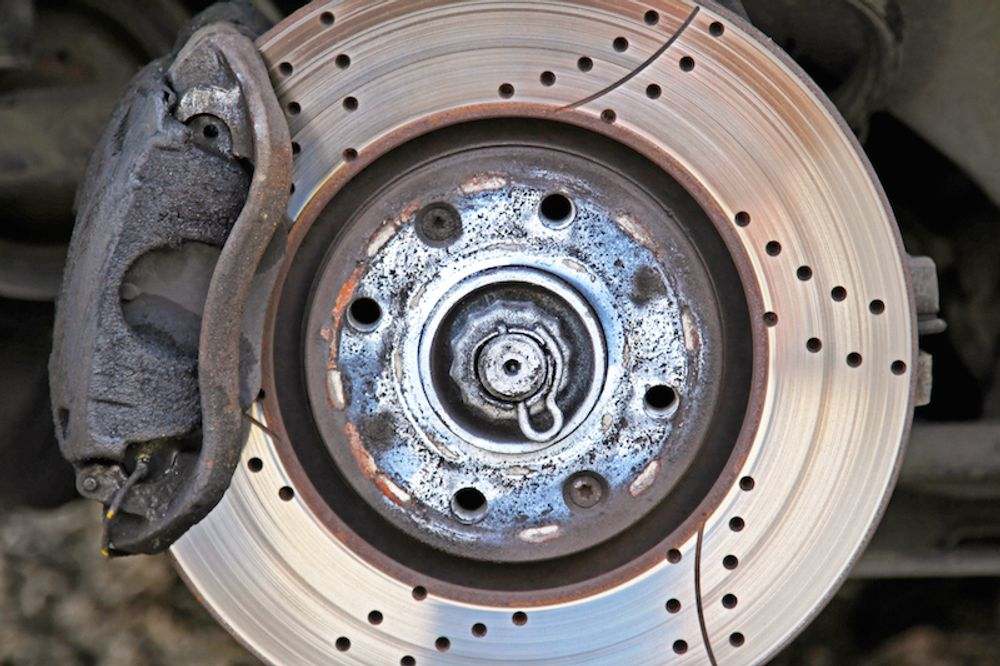All of us have learned to love our car brakes. We hover our foot over the pedal, gently tap..tap..tap.. to slow down, and occasionally we SLAM them to the floorboards to stop on the dime. Yes, we need them and love them because they have prevented many fender-benders and have extended the lives of many squirrels. In the winter months, the health of your brakes is even more important with black ice, snow and slush.
A car’s brake system is made up of many components and when put into action apply physical force to slow a car down or drive it to a screeching halt. Depressing a brake pedal translates to force applied to brake pads on a brake rotor. The brake rotor is located behind each of the four car wheels – they are the shinny metal disc-like objects. Probably the cleanest part of the car!
Brake pads and rotors are the components of the braking system that wear. They need to be replaced regularly and at the end of their useful life. How long do brake pads last? It depends. If you drive a taxi, they know you on a first name basis at the brake repair shop. If you do a lot of highway driving, they can last a long time. Typically, severe driving conditions will cause you to get a brake job every 12,000 miles or essentially once per year.
But how do you know if your in need of a brake job if you’re not quite sure what the warning signs are? Check out these top 6 tips.
-
Keep your ears open.
Usually, when your brake pads need replacing, your car will let you know. If you hear an obnoxious squeal each and every time you hit your brakes, this is clear indication that it’s time to have those brake pads looked at and possibly replaced.
-
Visually Inspect Pads.
Some cars allow you to actually peek through the spokes in your wheels to see the brake pads themselves. Check your owners manual for recommended minimum pad thickness before they should be replaced. If you’re unable to see your brake pads or you’re not sure you’re looking at the right thing, ask your mechanic to take a peek at them for you whenever you get your tires rotated. This is a good way to always track the progress of your brake pad life.
-
Visually Inspect Rotors.
Similar to the previous tip, take a look at the surface of your rotors. If they are smooth and shinny, you should be in good shape. If you see ripples or grooves in the rotor, get your brakes checked by a mechanic immediately.
-
Look for Evidence.
Leaking brake fluid will leave a puddle underneath your car when you’ve parked it for awhile. Brake fluid looks similar to oil, so it’s always a good idea to have your car checked out if you notice you’re leaving behind puddles where you park.
-
Notice Your Steering Wheel.
If your steering wheel vibrates as you apply your brakes, this may be a sign of warped rotor(s). No worries, this is an easy fix, but don’t drive with this condition for a long period of time. Have your mechanic look at this right away.
-
Pay Attention to Brake Performance.
Far too many times, we realize our brakes are ineffective after they’ve failed us. But you don’t have to wait for this to happen to know you need to have your brakes looked at. Always pay attention to any irregularities in the feel of your brake pedal when you press down on it, as well as any reduced response time. If you feel any change whatsoever, get yourself to a repair shop as soon as possible.
If you are in need of a brake inspection or full brake job, start with Openbay. Compare pricing and book service from quality local shops with the click of a button.

